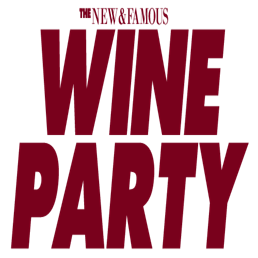
Wineparty
Uploaded on Jan 14, 2025
Category
News & Politics
Dive into the flavors of Russian wines in Larnaka's Russian district. Explore unique traditions, sunsets, and wine tales with a touch of post-Soviet charm.
Category
News & Politics
Enemy Wine – the ruble hookers in the
Enemy Wine – the ruble
hookers in the Russian
district of Larnaka.
Sunset in the Russian district of Larnaka. Prefabricated buildings here too, familiar terrain.
On the terraces of the Russians, simple Lidl special offer BBQs are smoking, completely
burnt meat that fills the air with clouds. Around the corner is the post-Soviet “Bereshka”
supermarket, which supplies the homeless Slavs with kvass, pilmeni and mayonnaise salads
- until late at night. A folklore festival booms mercilessly from the beach, in endless
repetitions of the same melodies. A strange world.
Today, we, Leonie and Geraldine (real names known to the editors), are getting two bottles
from our wine cabinet 'from enemy territory', from Russia. With the help of a translation
app - we don't understand everything we read here - we get started in the semi-darkness of
the terrace.
The first bottle is a 2021 Cuveé from Kuban, a small town in southern Russia with
surrounding wine-growing areas, a few kilometers from the Crimean Bridge. The wine
probably only got to us because Olaf Scholz didn't deliver the "Taurus". No matter. Open it.
Leonie immediately jumps in with a hasty judgement, “It’s kind of a Chardonnay” and “on
the mash. Mash, mash”, while I fiddle with the label using Google Translate.
Google Translate doesn't like wine labels because they're rounded and it only ever
translates two thirds of the text, the part in the middle of the label. We find out that the
cuvée contains Pinot Gris and Riesling; Google Translate translates the shelf life as
"unlimited", which we think is great. It was also in a barrel, according to the website. But we
don't believe that.
The wine seems to be a “working horse” of the Chateau Pinot Winery (https://chateau-
pinot.ru), blended to meet a certain taste that we now assume is the majority taste on the
Russian market. The website also offers Italian-style agrotourism and even mentions “Pet
Nat” and aged wines. Will we ever see them? You can order little to nothing from Russia,
hardly any European freight carriers travel to or from Russia, and due to the sanctions, bank
transfers or credit card payments are not possible there either.
Kommersant, a Russian business newspaper whose focus is not always on the war,
describes the challenges facing the Russian wine industry and also the trade in Russian
wines. All imports have essentially come to a standstill, even though Western wine is not
sanctioned. Georgia, Armenia and South America are probably only partially compensating
for the missing bottles. The Russian state is already intervening here, various support
projects for winemakers and wineries have been developed, and sales of local wines are
increasing considerably. “According to the Federal Service for Control of Alcohol and
Tobacco Markets (this authority is called Rosalkogoltabakcontrol - you can smile, despite the
war), sparkling wine production in Russia increased by 28.9% in the first six months of 2024
compared to the previous year, amounting to 6.1 million decaliters (1 decaliter = 10 liters).
“The production of still wines increased by 12.6% year-on-year to 15.7 million decaliters in
the same period,” Kommersant recently wrote.
The second wine at our table is an anesthetic with 14 percent alcohol, a cuvée of Syrah,
Malbecq, Mourvedre and Pinot Noir, called "Terroir" and comes from the Gai-Kozdor
winery, which is very well known in Russia and is less than five kilometers from the coast of
the Black Sea. Leonie recognized the Mourvedre immediately and complained that I had
obviously served the red wine too cold again. The Grenache grape variety provides the fruit.
It mercilessly masks the resolute spiciness. We agreed that it was a powerful wine, but just
a bit too much "of everything". A little less cold, it was a perfectly drinkable cuvée.
But Leonie is annoyed, is already playing around with the glass and wants a Sangiovese right
now.
Gai Kozdor's website shows a very modern building made of glass and steel - a winery that
could be in Austria or Germany; a family business, with permanent consultants from France,
who are called "our French" in the winery. Are these "our French" still there? We think not.
Conclusion: Our secret source will perhaps smuggle us more stuff from Russia to Cyprus. So
far we have only gotten to know the average taste of the wine-drinking Russian majority
population. Local Russian wineries are working to compensate for the lack of imports and
are blending everyday cuvées that in many ways want to give the wine drinker a very
strong, alcoholic and classic wine experience. Blending impossible? Doesn't exist in the new
Tsarist Empire.
Sources: none. Russian wines are not traded in the EU. But ask “Bündnis Sahra
Wagenknecht”: Glinkastr. 32 10117 Berlin
Price: for both under 1,500 rubles, so probably well under € 20.-
Thank
You

Comments